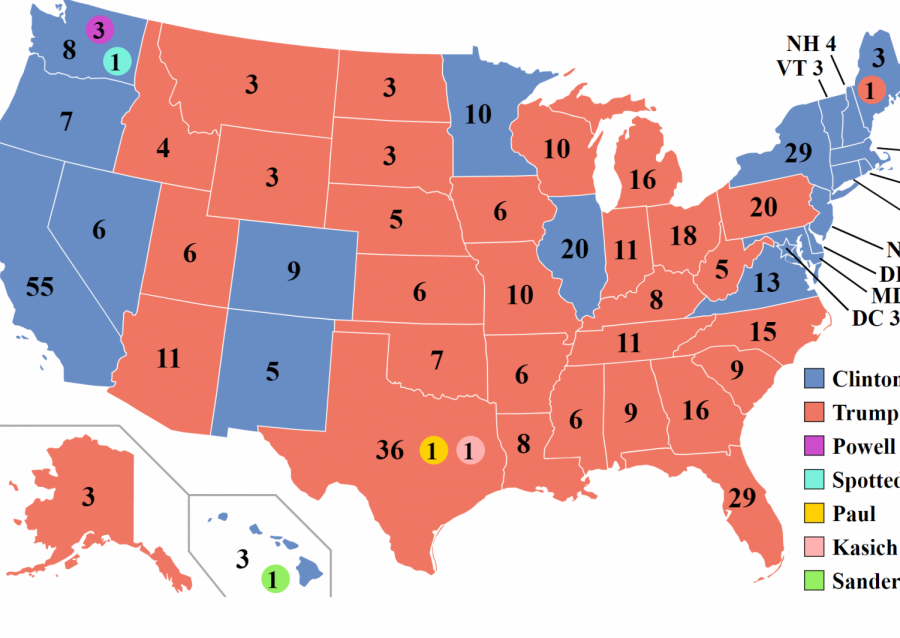The Electoral College Explained
This was the Electoral College map of the 2016 Presidential election. This also shows the number of electoral votes each state has.
October 24, 2020
If you know anything about the American election system, it’s that the results of a Presidential election are determined by the Electoral College. An Electoral College is a group of electors that meet every 4 years for the sole purpose of electing the President and Vice President of the United States.
There are a total of 538 electoral votes, and a candidate needs at least 270 to win. How this system works is that each one of the 50 states gets a certain number of electoral votes based on the total number of representatives they have in Congress.
For example, California, the biggest state, has a total of 55 electoral votes. This is because the state has 53 representatives plus 2 senators. This would give California a total of 55 electoral votes.
When people go and cast their ballots, they don’t directly vote for the President. Instead, voters vote on a group of electors that cast their votes that ultimately decide who becomes President. According to usa.gov, in most cases, a projected winner is usually announced on election night. But, the Electoral College votes usually take place around Mid-December. This is when electors meet in their states to cast their votes.
Even though the Constitution doesn’t state that electors have to follow their state’s popular vote, many states have put laws in place to make sure they do follow it. Most of the time, electors follow what the state result was. Very rarely did some electors break off from that and cast their vote on another candidate. In July 2020, the Supreme Court ruled those state laws constitutional, meaning electors have to follow their state’s popular vote.
Whenever the state’s popular vote gets counted and the Electoral College voters cast their votes on that candidate, the winning candidate gets all of the state’s electoral votes. This method can also be called “winner-take-all.” This is implemented in 48 states. According to an archived Time article, Maine and Nebraska are the only two states to have implemented the “district system.” This means the popular votes are decided by each congressional district. This method has only been used twice.
Although it’s very rare, there could be a time where no candidate reaches 270 electoral votes. If this happens, the election is decided in a different way. According to the website 270ToWin, the election gets thrown at the House of Representatives. Each state delegation will only receive one vote, and a candidate needs 26 votes to win. According to usa.gov, the Senate decides the Vice President based on the top two candidates.












